#and also ana mendieta's work!!
Note
your post inspired me so here's who I think certain saw characters favorite artists would be with no explanation at all:
hoffman: george bellows
amanda: paul cezanne
john: osman hamdi bey
lawrence: allan kaprow
adam: marta minujin
lynn: doris salcedo
strahm: caravaggio
oh i like this!! i want to add some:
the eerie quality of henri de toulouse-lautrec's work (at least imo) feels like it'd be appealing to hoffman. along the same vein, i'd say edvard munch too. ALSO FRANCISCO GOYA. im surprised he wasn’t also painting fucked up shit on his own walls.
amanda would love louise bourgeois, ana mendieta, joan mitchell, and eva hesse. i feel like she'd also be really into fiber arts in general (tamara kostianovsky, kiki smith, raija jokinen). also we know she likes some renaissance/stylistically classical art bc she has the birth of venus print next to her bed in saw 3! i think this is more for gay reasons but i bet she'd like john william waterhouse’s mythological paintings.
i love this one for john! the obvious one for him would be da vinci as well- john's drawings actually remind me a lot of his. i think he wouldn't be into abstraction because “it lacks intellect” or some shit. probably dark, dramatic, pensive baroque art.
i feel like lawrence would be into impressionism but NOT post impressionism!!! he'd be so annoying about it. monet, degas, cassat, etc. i also think he'd enjoy botanical illustrations. probably a fan of edward hopper too.
adam would like jc leyendecker. just based on vibes. others i think he'd enjoy include john singer sargent, norman lewis, lee krasner, yoshitaka amano, salman toor, yayoi kusama... these are all over the place uhhhh i just think he'd enjoy a wide range of styles. now ofc he has favorite photographers, but that is not at all my area of study and the only one i could think of off the top of my head that would fit him is robert mapplethorpe.
for lynn, andrew wyeth makes sense to me- the lonely, empty, desolate feeling his paintings give you would probably speak to her :( agnes martin (ESPECIALLY agnes martin) and louise nevelson would probably appeal to her too.
strahm liking caravaggio is basically canon to me. like of fucking course. for one, he'd just loooove telling people that the Old Master painters are the finest of fine artists just bc he's a dick (and doesn't know shit about art made after like the 18th century). but also caravaggio was gay and killed someone and was murdered so. it fits. he'd probably scoff at rene magritte paintings but deep down he'd really enjoy them.
im obsessed with this ask and i've been drafting this response for a hot minute bc i wanted to put some real thought into it. VERY fun and a great way to procrastinate on work as an art history grad student
#asks#saw movies#saw franchise#having certain thoughts about artworks with religious symbolism and how we could analyze saw movies through them…
15 notes
·
View notes
Text
In this episode, we talk about the power of storytelling, the importance of writing women's lives into history and fighting for their rights. Shafak has said: "...as a young Turkish student, it occurred to me that the history that was taught to me top down could be seen in different ways depending on who is telling the stories..."
We speak about Artemisia Gentileschi to Frida Kahlo, Ana Mendieta to Georgia O'Keeffe; Shafak's upbringing and the importance of multitudinous narratives, and the power of images when it comes to writing novels.
We explore the similarities between a painting and a novel; how storytelling can be transmitted through so many different artforms, from word of mouth or the written word. As a novelist, Shafak spends so much time dreaming up worlds, and, in a way, this is not that dissimilar from an artist.
But we also talk about the importance of emotion, and how stories can give us that, as Shafak has said: “Why is it that we underestimate feelings and perceptions? I think it’s going to be one of our biggest intellectual challenges, because our political systems are replete with emotions … and yet within the academic and among the intelligentsia, we are yet to take emotions seriously…”
Shafak is the author of 19 books, which have been translated into 57 languages. A shortlister for the Booker Prize and Women's Prize for Fiction, she holds a PhD in political science and she has taught at universities in Turkey, the US and the UK.
A Fellow and a Vice President of the Royal Society of Literature, Shafak is also instrumental in her work as an advocate for women's rights, LGBTQ+ rights and freedom of expression. A twice TED Global speaker, Shafak contributes to publications around the world, such as the Guardian with her poignant articles on women’s rights in Turkey.
#Elif Shafak on storytelling in art#the great women artists podcast#podcast#women in art#art history#women artists#women writers#women in art history#history#podcasts
2 notes
·
View notes
Text

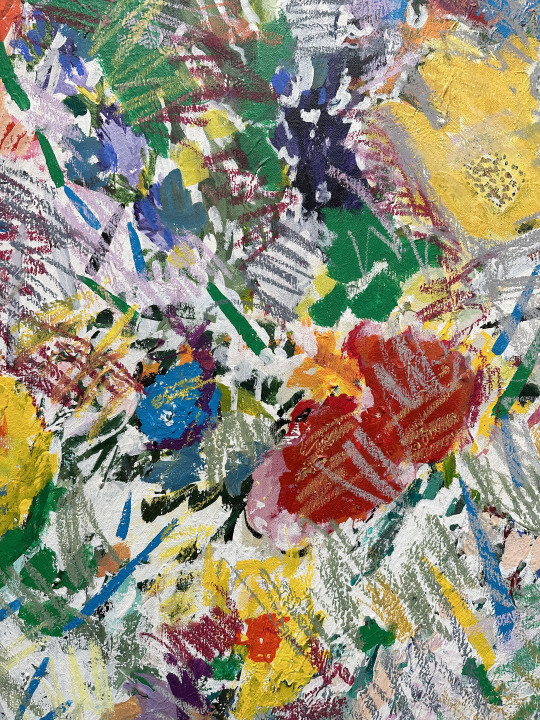

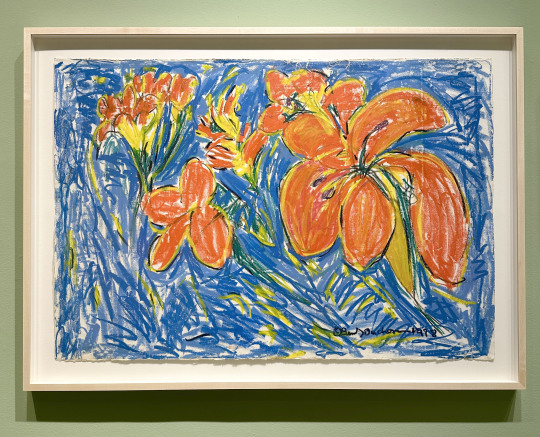
Andrew Edlin Gallery is currently showing a collection of rarely seen works by artist Beverly Buchanan. It covers her years as an abstract expressionist painter in NYC and her later work inspired by the rural South.
The gallery’s press release gives a really good history of this wonderful artist-
The first section of the show features the artist’s abstract paintings and works on paper from the 1970s, alongside post-minimalist sculpture from the late 1970s and early 1980s. The second section introduces a later, more personal side of Buchanan’s oeuvre, her colorful depictions of flowers and small folk-inspired assemblages created during the same period as her well-known “shacks.” A number of the works in the show, many of which were part of the artist’s private collection, have never been shown.
Though Buchanan wrote about her love of “making things” from an early age, it wasn’t until 1971, when she began taking evening classes taught by African-American painter Norman Lewis (1909-1979) at the Art Students League in New York, that her career as an artist took off. Abstract still-lifes that she made in Lewis’s class in 1972 are displayed here for the first time. That same year, her paintings were included in a group show at Cinque Gallery, a nonprofit space co-founded by Lewis and Romare Bearden (1911-1988), which showcased the art of emerging minority artists.
Having witnessed demolition sites in Harlem and SoHo, Buchanan evoked the visual erosion of architectural facades through what she dubbed her “Wall” paintings. In 1976 she presented a selection that she called “Torn Walls” in a two-person show titled City Walls at the Montclair Art Museum in New Jersey. In his New York Times review, David Shirey described the show as “indisputably a tinderbox of a display that will cause sparks to fly” and “the kind …one sees more regularly at the Whitney Museum and at some of New York’s avantgarde galleries.” Three of these paintings are being shown for the first time since that exhibition, forty-seven years ago. The show also includes a monotype, small studies, and a large painting from a series she titled “Black Walls.” The latter was originally featured in Shackworks, a seminal exhibition that opened at the Montclair Art Museum in 1994 and traveled to nine other institutions from 1994-1996.
By the late 1970s, Buchanan was further exploring the aesthetics of architectural decay through sculpture, i.e., cast concrete assemblages, made from pieces of stone, brick debris, clay, and cement mixtures. She arranged these works in clusters on the floor, documenting them with photographs, and exhibited them, notably at Truman Gallery in New York in 1978, and at the feminist artist cooperative A.I.R. Gallery in 1980 in its groundbreaking show Dialectics of Isolation, curated by Ana Mendieta. Some of the small black terracotta works on display may be considered as studies for these larger assemblages.
After moving to Georgia in 1977, Buchanan became increasingly interested in making what she referred to as “environmental sculpture,” artworks that mimicked exterior surfaces and were also site-specific installations that were allowed to decay over time and become part of the surroundings. Most notably, in 1979 she completed Ruins and Rituals (also the title of the Brooklyn Museum retrospective from 2016-2017), and in 1980 Marsh Ruins, with funding from a Guggenheim Fellowship. To construct the three mounds that comprise Marsh Ruins, Buchanan produced her own tabby cement. Composed of the lime from burned oyster shells mixed with sand, water, ash, and other shells, tabby is what colonial settlers used to build structures in coastal Georgia, the location of Marsh Ruins. In her zine “Making Tabby for Brick Sculptures,” Buchanan documented the labor-intensive process of making tabby, a task that in the eighteenth century was typically delegated to enslaved workers. Two smaller iterations of these structures, with bits of oyster shell showing in the concrete, are laid out in the show alongside four other examples of her cast concrete assemblages. Though little is known about their exhibition history, we do know that the artist placed these cast concrete works in her garden in Athens, Georgia. They retain stripes of the green, blue, black and earth-toned paint with which Buchanan initially covered them. The faint outline of her signature “B.B.” is also visible.
Buchanan’s later work is intimately linked to her natural surroundings and folk art. As a native Southerner, she drew on memories from her childhood as well as the lush Georgian landscape and yard art of local self-taught artists. A passionate gardener, Buchanan produced vivid oil pastel flower drawings and small assemblage works. She loved to rummage through thrift stores collecting marbles, wedding toppers, and beads, to create what she referred to as her “Christmas trees,” and “spirit jars,” her take on memory jugs, a prized Southern Folk Art form. Buchanan was particularly moved by a visit to folk artist Nellie Mae Rowe’s home in Fayette County, Georgia, and reminisced: “Being at Nellie Mae Rowe’s home was like being engulfed in a magic forest of her work because every surface had a mark from her hand and the simple chewing gum works made you never take gum as just chewing gum again.” A distinctive chewing gum jug and pin are also included in the show.
This exhibition closes 5/13/23.
#beverly buchanan#andrew edlin gallery#andrew edlin#nyc art shows#art#art shows#painting#drawing#sculpture#abstract expressionist#flower paintings#american folk art#american south
5 notes
·
View notes
Text
Home
This afternoon, I was very tired, so I decided to take it easy in terms of artwork and instead do some artist research.
As I lean more into the theme of home, and exploring what that means for me, I am looking more at artists that focus on home, domesticity, and what that means for them.
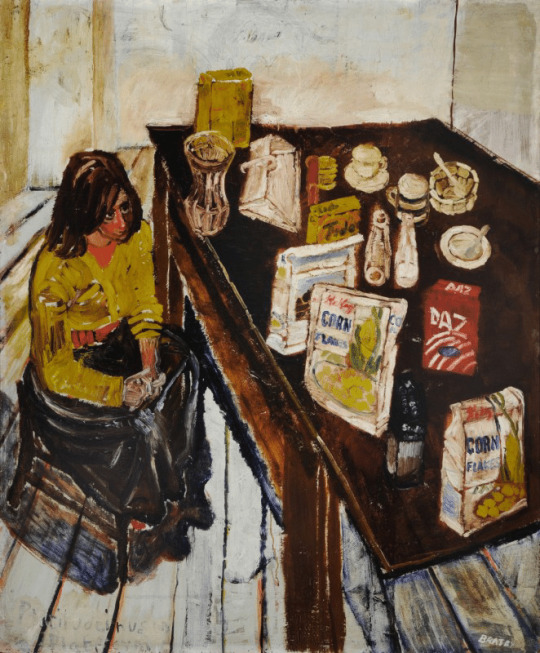
"Jean and Table Top (Girl in Yellow Jumper)", John Bratby, 1953-1954
Bratby was a part of the Kitchen Sink Painters, a group of four painters active in the 1950s whose work was concerned with ordinary lives of ordinary people (often with socio-political undertones)
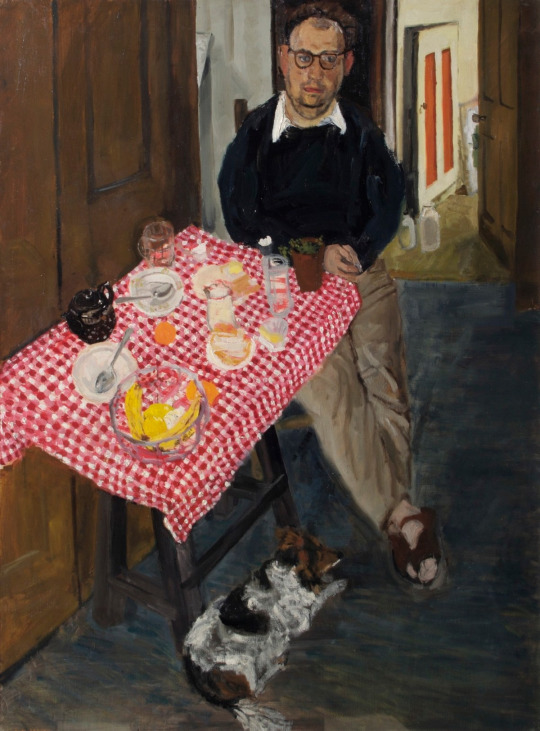
"Early Portrait of John Bratby", Jean Cooke, 1954
Cooke was married to Bratby, and the feminist in me can't help but notice the contrast in their depictions of domesticity. Where his work feels constructed and masculine, hers feels much more at ease.

"Kitchen", Liza Lou, 1991-1996
Lou's installation is made entirely out of glass beads, and its laborious process of creation is a commentary on unsung domestic labour. If women belong in the kitchen, we might as well make the kitchen look pretty.
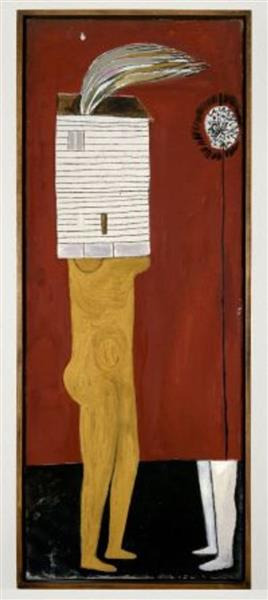
"Femme Maison", Louise Bourgeois, 1945-1947
Though she's best known for her spiders, Louise Bourgeois was also known to use architectural imagery as a symbol of both security and entrapment.
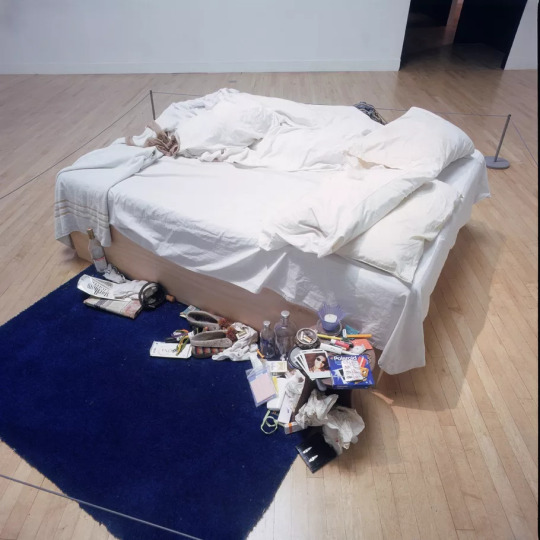
"My Bed", Tracey Emin, 1999
I really could have chosen any of Emin's pieces here- the raw intimacy of her work invites us into her world and gives us a glimpse into her inner world. For a while, this bed was her home.
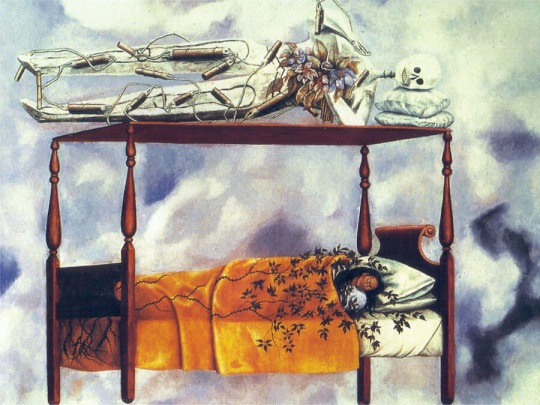
"The Dream (The Bed)", Frida Kahlo, 1940
Speaking of beds! Kahlo was bed-bound for much of her adult life due to a tram accident she suffered as a young woman. This painting depicts the bed as a liminal space between life and death. As someone who has often been bed-bound myself due to ongoing illness, her work really speaks to me.
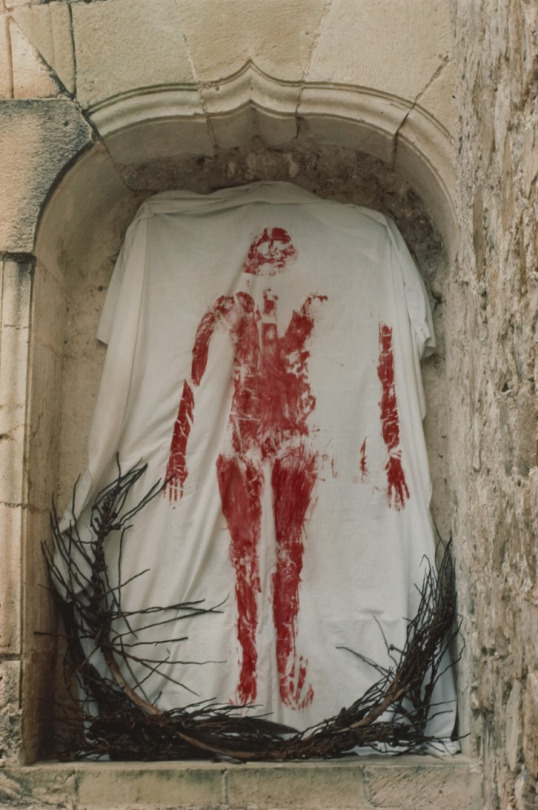
"Silueta Works in Mexico", Ana Mendieta, 1973-1977
What does "home" mean? Mendieta's work was often inspired by her displacement from her native Colombia at a young age. She explores the connection between body and earth.
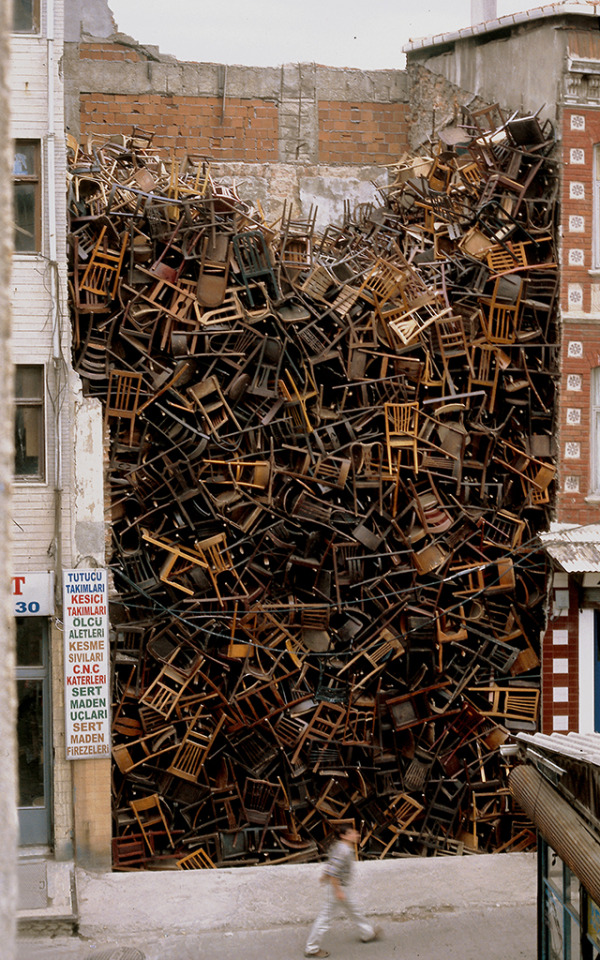
Untitled, Doris Salcedo, 2003
This piece isn't strictly about the theme of home but it's one of my all-time favourite pieces and I felt a need to include it. Much of Salcedo's work focuses on the feeling of displacement, using domestic items as symbols for people. Here, people displaced due to war are represented by humble kitchen chairs.
#art#artist research#john bratby#kitchen sink painter#art student#jean cooke#liza lou#louise bourgeois#tracey emin#frida kahlo#ana mendieta#doris salcedo#fine art#k00281262 secondary
17 notes
·
View notes
Text
i dont think I have words to express how I feel about ana medietas work and also her own history like how viscerally she captured these ephemeral fleeting ideas about the self and the body and death and metamorphosis. but then also in the morbid attachment you get to the memory of a murdered woman gone too soon km sorry I'm being parasocial abt u miss mendieta
3 notes
·
View notes
Text
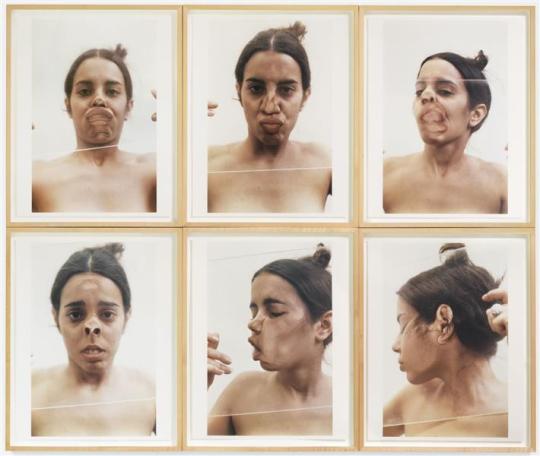
An homage to Ana Mendieta | Untitled (Glass on Body Imprints), Face, 1972.
In her documented performance, Mendieta pressed a piece of glass against her face and different areas of her naked body to complete a series of thirty-six slides.
The works are among Mendieta’s earliest experiments with body art and affirm control as much as they bemoan the violent pressure and resulting discomfort the protagonist inflicted upon herself. In her strikingly modern reinterpretation of the grotesque, Mendieta embraced the disquieting force of deformity as a commentary against the societal biases she had experienced as a Cuban American female artist.
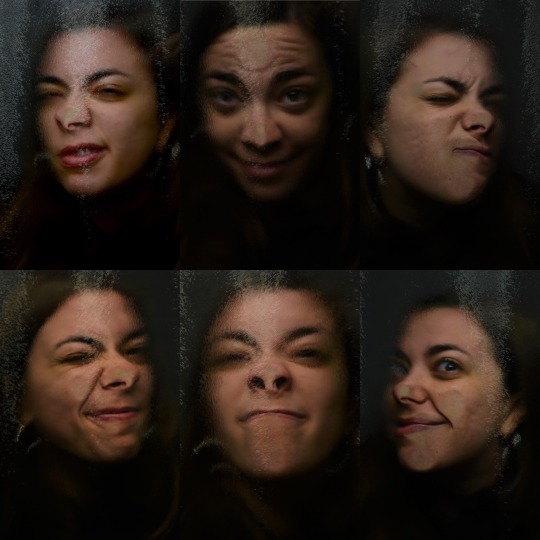
It can be interesting to think about how Mendieta's artwork challenges our ideas about the body and how we see ourselves. It can also be a way to think about how we express ourselves through art and how we can use art to explore our own identities and the world around us.
5 notes
·
View notes
Text

Where is Ana Mandieta?
¿Donde esta Ana Mendieta? ... #STOPWARONWOMEN
... "I went to art school with Ana and I completely believe what Carl Andre said, that she jumped out the window in a fit of anger at him. Consider it her final performance. If you really want a target for righteous anger, you might consider her art school professor who would technically now be considered a rapist by assertion of his position of authority. Ironically, he was grading her on rape performance artworks."
https://lareviewofbooks.org/article/carl-broke-something-on-carl-andre-ana-mendieta-and-the-cult-of-the-male-genius
Let’s briefly unpack the contempt and misogyny and professional jealousy of this anonymous commenter. He wants so desperately to believe it is more likely that Mendieta threw herself, her talent, her imagination, her burgeoning career, out of a window in a fit of pique rather than being pushed by her drunk husband in the middle of a violent fight. He wants to believe that anyone angered by her death is simply looking for a target for righteous indignation over sexism. He tells us to get hysterical over something else — that her teacher, the first person to document her work and support her talent, was also her lover. He equates her death with her sex life, her death with her performances, her death with her art — and reduces women’s agony over this life to feminist hysteria.
learn more about the Artist:
https://palianshow.wordpress.com/2022/11/18/ana-mendieta/
https://palianshow.wordpress.com/2021/11/17/ana-mendieta-would-be-73yo-today/
#palianshow #womensart #artbywomen #artherstory #anamendieta
2 notes
·
View notes
Text
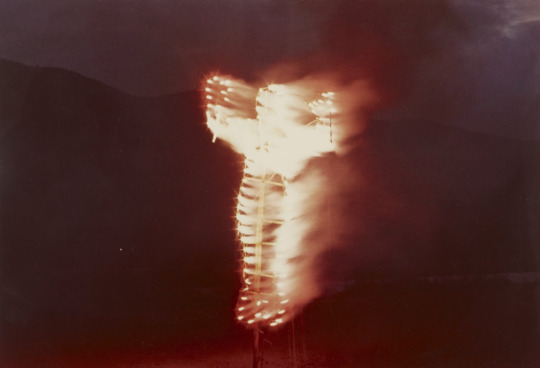
Ana Mendieta - Silueta series (1974)
Mendieta was a Cuban/American performance and video artist. Besides working with these two mediums she was also a sculptor and painter. She is mostly known for her "earth-body" artworks. She died in 1985.
#contemporary art#art#artist#female artist#performance artist#art history#photograph#historical art#dark academia#art lovers#art information#ana mendieta
3 notes
·
View notes
Text
ana mendieta’s work is very inspiring but I’m not a big fan of artists who imitate her work too closely… like first of all it was a Moment when she did it and that doesn’t need to be replicated, also erases the personal connection to the diaspora experience lol
5 notes
·
View notes
Photo

Ana Mendieta "My art is grounded on the belief in one universal energy which runs though everything. From insect to man, from man to spectre, from spectre to plant, from plant to galaxy.” - Ana Mendieta, Artist. In the summer of 1971, Cuban born artist Ana Mendieta travelled to Mexico for research, describing the experience as "like going back to the source, being able to get some magic just by being there." Her vision - of a unified art of the self, drawing on nature and place as well as performance and sculpture - was being formed. Its first manifestation was also one of the rawest: a series of visceral performances created in response to the 1973 rape and murder of a university student, Sara Ann Otten. By 1974, Mendieta was working on a series of performances that used blood as the primary material. In ‘Body Tracks’ Mendieta dips her hands and forearms in blood then smears them down a wall. Everything she did was documented on film or photographs - often by the artist and academic Hans Breder - whom Mendieta has a decade-long affair when she began making art at the ‘University of Iowa’. In the summer of 1975, having returned to Mexico, she created the first of her ‘Siluetas’ series in which she left an imprint of her body in the ground. Her silhouette pieces became a kind of signature and were often executed in stones, leaves and twigs, flowers and driftwood, and sometimes set on fire, outlined by fireworks or drenched with red paint. Mendieta arrived in New York in 1978. She found a tiny apartment on Sullivan Street and eventually made friends with some of the leading feminist artists of the time - Nancy Spero, Mary Beth Edelson and Carolee Schneemann. When Edelson organised a fancy-dress party for Louise Bourgeois - Mendieta went as Frida Kahlo. https://www.instagram.com/p/CdIclQ0Mxv0/?igshid=NGJjMDIxMWI=
2 notes
·
View notes
Text
Independent Research: Performance and Conceptual Art 1980-1990s
In class we were split into research groups and we given the topic of conceptual art post 1990 to research and discuss, and I found it particularly interesting so I have decided to expand on this, extending to reflect on performance art as this is a topic I would like to further my knowledge in. I have chosen four artists who's work I have a personal interest in and have futher discussed with my group, and will be analysing their practise, place within and significance to conceptual and contemporary art. First beginning by discussing the work of Cuban artist Ana Mendieta and her practise and approach to performance art in the 80s following her Silueta Series. Then looking at the work of Marina Abramovic and her many years of conceptual performance pieces, also exploring body art. And finally I will be discussing Moscow conceptualists Alexander Melamid and Vitaly Komar, who have collaborated on multiple projects surrounding themes of their experience living in the oppressive Soviet Union.
Ana Mendieta's practise revolves around 'earth-body works' as she is concerned with themes of the female body, death, transformation and cultural displacement with a connection to Cuba. She often used the ritualistic tones that are seen in Cuban religious practises, through the symbols of blood, air, water and fire. This can be seen most prominently in her famous Silueta series (1973-1980). Mendieta was greatly interested in feminist art practises in the early 80s, as she continued to explore the emotional connection between her body and the natural world. For example with her Amategram series - Vivification of flesh in 1981. Totem-like forms painted with black acrylic onto Amate, paper made from bark by Otomi Craftspeople in Mexico. Further emphasising Mendieta's engagement with the body and earth. Again linking with rituals and offerings in her symbolic mark making process. Another artwork that follows this is Nile Born (1984) a sculpture created out of sand, laid on a wooden base and shaped to scale Mendieta's body. This artwork is about re-establishing bonds between the artists home country after being exiled and living in America, the artwork serves as a symbol for women.
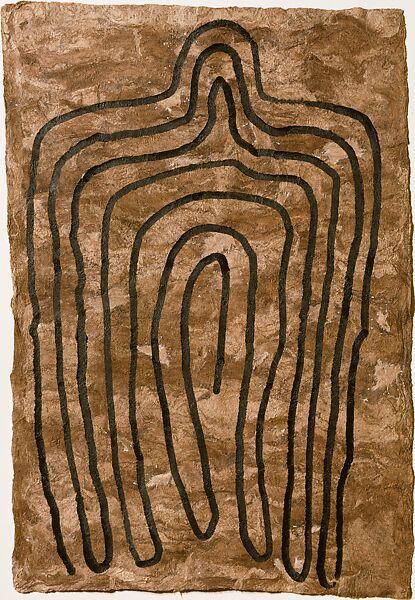
Marina Abramovic is a pioneer in utilising performance as a visual art form, she explores the physical and mental limits of her being with her practise, the body is both her subject and medium. Abramovic has endured, pain, danger and exhaustion for emotional transformation. One example of this is her piece Rest Energy (1980) a collaborative artwork with the artist's long term partner, Ulay. One arrow is held on the weight of their body, the arrow pointing at Abramovic's heart with microphones recording their heartbeats which became more intense as the performance progressed. The performance was completely dependant on trust. Another artwork I found very interesting due to the use of digital media and the idea of repetition of an act was Cleaning the mirror (1995) of which 5 monitors were stacked on top of each other and played videos of a performance where Abramovic scrubs a human skeleton covered in dirt in her lap, the ritual of becoming one with your own mortality - a Tibetan death rite, the action lasted three hours.
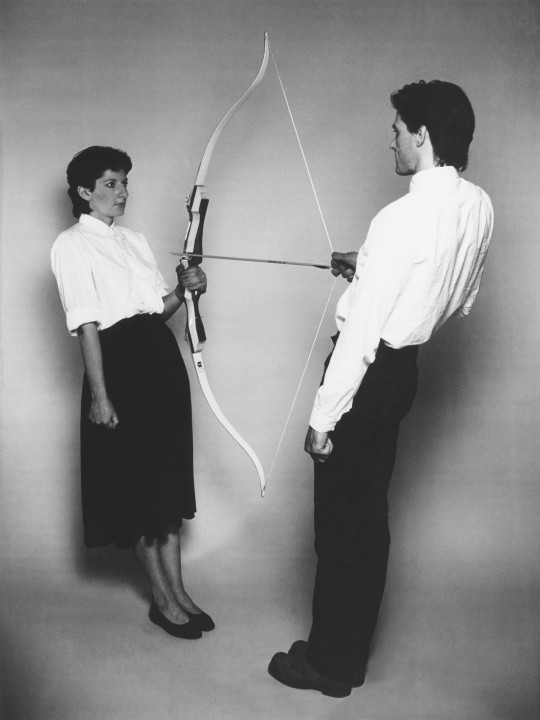
Artists Alexander Melimid and Vitaly Komar were two leading conceptualists in Moscow. Their work ranges from painting and sculpture to performance pieces and they have worked with a variety of mediums. The artists first met in 1963 as students at the Stroganov Institute of Art and Design in Moscow and began collaborating in 1965. They were expelled from the Moscow union of artists after participating in many avant-garde exhibitions and emigrated to Israel in 1977 before moving to New York a year later. Their work continued to critique the totalitarian regime they were brought up in. They created a series of artworks between 1980-83 named The Nostalgic Socialist Realism series, Melimid and Komar made ironic commentaries on the propaganda of communism, that mimicked the subjects and style of official art, they satirize art history. Blindman's Buff in particular is interesting stands out in this series as although the subject is seemingly light hearted, the tone of the painting is clear, with the drab colours, as well as the picture of Stalin bathed in red displayed on the wall.
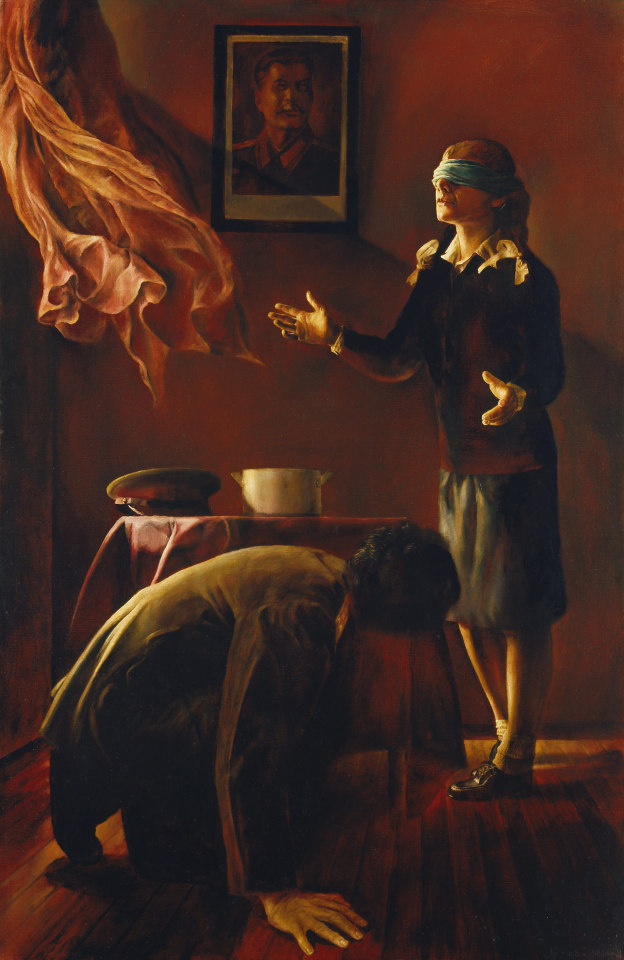
Bibliography
Demaria, C., 2004. The performative body of Marina Abramović: rerelating (in) time and space. European Journal of Women's Studies, 11(3), pp.295-307. The Performative Body of Marina Abramović: Rerelating (in) Time and Space - Cristina Demaria, 2004 (sagepub.com)
Hillings, V.L., 1999. Komar and Melamid's Dialogue with (Art) History. Art Journal, 58(4), pp.48-61. Komar and Melamid's Dialogue with (Art) History: Art Journal: Vol 58, No 4 (tandfonline.com)
Roulet, L., 2012. Ana Mendieta as Cultural Connector with Cuba. American Art, 26(2), pp.21-27. https://www.journals.uchicago.edu/doi/full/10.1086/667947
Wollen, P., 1991. Scenes from the future: Komar & Melamid. New Left Review, 185, pp.68-80. Peter Wollen, Scenes from the Future: Komar & Melamid, NLR I/185, January–February 1991 (newleftreview.org)
0 notes
Photo

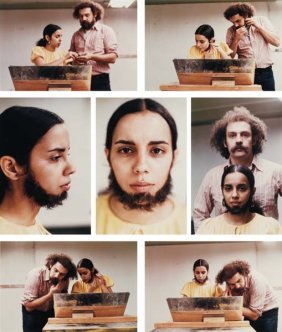


Ana Mendieta (1948-85) Cuba/ USA
Untitled (Facial Hair Transplants)
A artsandculture.google
Cuban artist Ana Mendieta’s (1948–1985, Cuba)early series Untitled (Facial Hair Transplants), 1972, documents a performance in which she glued fragments of her fellow student Morty Sklar’s beard onto her own female face, highlighting the idea that binary gender classifications are social constructions that frame and overdetermine sexualities. By hybridising her identity, Mendieta problematised those classifications, suggesting that so-called masculine identity as expressed throughfacial hair is nothing but artifice.
What does it mean to be a man today? The Barbican's Masculinities: Liberation through Photography considers how masculinity has been coded, performed, and socially constructed from the 1960s to the present day.
B posted by Ashley A. womenartandculture.blogspot.com.au/2012/05/ana-mendietas-untitled-facialhair.html
Ana Mendieta’s “Untitled (Facial Hair Transplants)”
is a unique work that examines the boundary of what is typical for men and women. In this 1972 work, Mendieta transfers the beard of a fellow student at the time, Morty Sklar, onto her own face. The actual work is a group of photographs documenting the process and final result. This was one of Mendieta’s earliest works. She completed it while at graduate school in the University of Iowa (Heuer, 2011). This piece is closely related with a few other pieces that Mendieta completed around this time. They are related in Mendieta’s alterations of her image to something out of the norm. These pieces are unique in Mendieta’s art since they show the fairly unobstructed images of Mendieta’s own face. Many of her later works, especially the Silueta series, focus more on the body and the elements. In this work, Mendieta creates a paradox in regards to tone. By adorning her face with the facial hair, she is playful, almost in the same way a young girl could dress up in her father’s clothing, but it is the underlying themes and meaning in this work that give it a more serious tone.
Ana Mendieta addressed several themes in her Untitled (Facial Hair Transplants) ... One of the biggest themes present in this piece is the theme of gender. Mendieta is blatant with her manipulation of gender in this piece. Much like in Lorber’s, “Night to his Day”, she challenges beliefs about innate behavior in regards to gender (Lorber 33). By adorning her own face with a man’s facial hair, she goes against the “expected”... The idea [that] gender binaries trap and ostracize people who may not fit perfectly within their borders. Mendieta takes a stand in a way against these stereotypes in this art work. I believe that is what makes this piece a feminist piece. Mendieta challenges the stereotypes that surround how a woman should act, and also challenges the stereotypes that surround feminism. As in Seely’s “F-Word Introduction”, Mendieta addresses the stereotypes that have been given to feminism, and does well to challenge the binary that has been created in society (Seely 2).
This piece... is closely related to the theme of sexuality. In this group of pictures, Mendieta places a man’s facial hair on her own face. She does not wear any makeup and her hair is worn very plainly. She plays with the theme of sexuality by muddling her own. It is not a very sexual artwork by the standards of beauty or nudeness, but it is a very sexual piece for the exact opposite reasons. By altering gender roles and expectations and minimizing her own beauty, I think that Mendieta has created a very sexual piece. It challenges people to reexamine what they believe about sexuality and it challenges the norms and stereotypes surrounding sexuality. ...
0 notes
Text
A large portion of my graphic media work surrounding women finding their inner peace (and mainly finding this ‘inner peace’ in the forest) can be linked to the concept of Ecofeminism. According to Mies and Shiva (1993), the term ‘Ecofeminism’ was coined by Francoise D’Eaubonne. However, it truly grew out of many social movements, and became popular ‘in the context of numerous protests and activities against environmental destruction’ (13). Ecofeminism is a women-identified movement, as we can see the destruction of the earth before our very eyes, and through the general female experience, we can see a clear link between women’s patriarchal oppression, and the oppression of nature and her beings (throughout this book, nature and the earth is referred to as having she/her pronouns).
For my project, I had many references to goddesses of nature in mind, the major one being ‘Gaia’. Merchant (1996) quotes Spretnak (1975) that ‘Gaia is the ancient earth-mother who brought forth the world and the human race from ‘the gaping void, Chaos.’’ (3). In my graphic media project, I have created a forest spirit who is the catalyst in giving my main character a spark that enables her to find fulfilment in herself. I referenced many depictions of Gaia when I created her. Furthermore, Merchant mentions how Spretnak’s aim through her book Lost Goddesses of Early Greece was to reclaim Gaia as a mother nature figure, which was also widely attempted amongst feminists, especially in the 1970s (3). According to these feminists and what they wrote about Gaia, she is the earth. She is the land we walk and breathe on. She is the sole creator and protector of the land, and it is she who brought life to this world. Such a powerful image evoked when thinking about this ultimately removes any sort of patriarchy or oppressive powers enforced on women out of the picture. What we are left with is a wide landscape painting of a green world that is run by women for women. Although this is an extremely radical take on what ecofeminism aims to achieve, I think that this idyllic world is one that enables women to have a peace of mind, almost an escape away from the damaging patriarchal culture they are forced to live in.
Not only does Ecofeminism give women some sort of control over the earth and prevent its destruction, but it also gives women some autonomy over their bodies and their reproductive choices. Shiva (1993) draws upon the link between the reduction of human reproduction, as well as the reduction of plant reproduction. Women are not seen as the ‘raw source’ of reproduction, but rather their wombs are regarded as ‘containers’ and their natural and organic relationship with the foetus is ‘replaced by knowledge mediated by men and machines which claims the monopoly of expertise to educate women to be good mothers’ (27). By comparison, industrially developed fertilisers are used to control nature’s limits to how much they can healthily reproduce and grow. This has created diseased soils, and salinised wastelands. Furthermore, hybridisation has enabled corporations to capitalise off of plant breeding (29). Plants cannot speak or react, leaving them to comply with this damaging control placed upon them. Therefore, the ecofeminist movement, which gives women the power to protect the earth from being capitalised off of, also gives women the chance to protect their own reproductive systems, away from medical books and knowledge used to speak over their own natural bonds with the child they have developed in their own bodies.
This leads me onto discussing the work of Ana Mendieta, who is considered to be a ‘martyr of female victimisation under patriarchy’ (Tepfer, 2002: 236), as well as a performance artist working during the 1970s feminist movement. According to Viso (2004), Mendieta had a fascination for ancient civilisations and cultures, and these often ran in conjunction with early feminist theories that ‘encouraged a rediscovery of the “goddess archetype”’ to empower women (45). Although I have briefly mentioned her in my earlier blog posts surrounding women and spirituality, I am looking at her work in more detail with an Ecofeminist stance.
Mendieta’s artwork is ‘grounded on the belief in one universal energy that runs through everything: from insect to man, from man to spectre, from spectre to plant, from plant to galaxy’ (Jones quoted in Viso, 2004: 56). Indeed, Mendieta’s Silueta series reinforces this belief by moulding herself into the earth and becoming one with the earth, which enabled her to have a ‘ritualistic relationship [with] the land’ (Brough, 2020). She considered her siluetas to be ‘self-portraits’, which I believe is very interesting in that she seems to have considered herself to be the soil, the plants, and the trees, with the way she has moulded, burned and buried the silhouette of her body into the land. She used organic materials such as blood, twigs and flowers - her constant use of natural resources in her artwork can be said to be a ‘reference to the cycles of life and the regenerative powers of nature and humanity’ (Viso, 2004: 52). However, Dango (2022) points out that Mendieta’s Siluetas do not celebrate women’s intrinsic connection with nature, but rather criticise the ‘alignment of environmental and seuxalised forms of domination.’ Certainly, I agree with this viewpoint as not only does Mendieta use scenes of nature to reinforce her beliefs, but she also uses scenes of her apartment to emphasise the rape of the woman, and thus, the ’Rape of the Earth.’ Fig. 1 shows the artist with her back facing the camera, her bloodied hands (dipped in tempera to mimic the look of blood) against the wall as she looks up at them. By comparison, Fig. 2 depicts a mould of a body in the sand, the bottom of the figure dyed red, depicting the image of blood. These two disturbing images emphasise how the rape of a woman is synonymous with the harsh treatment of the earth, which puts into clear perspective why the ecofeminist movement is a widespread movement, and why women in particular are so passionate about the topic.
Another artwork of Mendieta’s that I personally find fascinating and runs in conjunction with my graphic media project is Arbol de la Vida, or Tree of Life (see fig. 3). Here, we can see Mendieta’s body being covered in mud and foliage, with her arms slightly raised up while her body is pressed against a tree. Undoubtedly, Mendieta is portraying the relationship with the female and her connection to nature. Furthermore, the title of this photograph, Arbol de la Vida, is interesting as the Mayan and Mesoamerican beliefs state that the top of the Tree of Life reaches the heavens, while its roots reach into the underworld (Jones, 2023: 55). The tree represents the interconnectedness between all factions of the Earth, and that everything, everywhere, is connected. In my graphic media animation, the main character becomes one with the forest at the end, leaving her urban life behind and instead leading a life in the forest, where she feels fulfilled, and where she is meant to be.
Bibliography
Brough, J (2020) This Artwork Changed My Life: Ana Mendieta’s “Silueta” Series. Available at: https://www.artsy.net/article/artsy-editorial-artwork-changed-life-ana-mendietas-silueta-series (Accessed: 8 March 2024).
Dango, M. (2022) ‘Rape of the Earth: Ana Mendieta’s Defense of a Metaphor’, Signs: Journal of Women in Culture and Society, 48(1).
Jones, J. (2023) ‘Earth-Bodies as Re-Exsistence: Ana Mendieta’s Siluetas Beyond the Limits of Ecofeminism’, Feminist Formations, 34(3), pp. 34-56.
Merchant, C. (1996) Earthcare: Women and the Environment. New York: Routledge.
Mies, M. and Shiva, V. (1993) Ecofeminism. Australia: Spinifex Press.
Tepfer, E. (2002) ‘The presence of absence: Beyond the ‘great goddess’ in Ana Mendieta’s Silueta Series’, Women and Performance: A Journal of Feminist Theory, 12(2), pp. 236.
Viso, O.M., et al (2004) Ana Mendieta: Earth Body, Sculpture and Performance 1972-1985. Washington DC: Smithsonian Institution in association with Hatje Cantz.
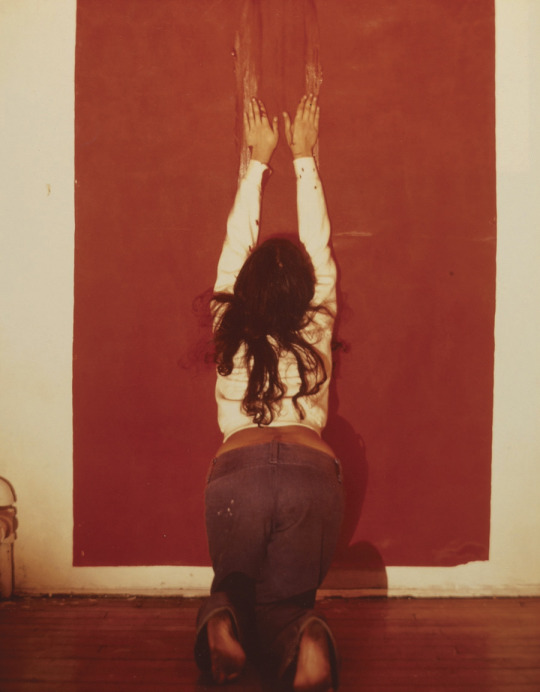
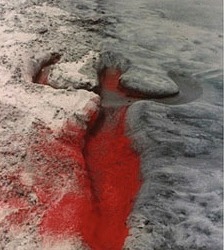
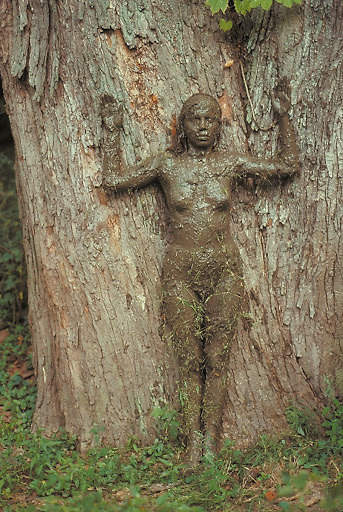
0 notes
Text
Ana Mendieta was so real when she made beautiful work that will always in some way be associated with or precipitated by the man who killed her but she is also so much more than that but also her entire existence and art practice is connected to the violence of men and the undoing of that because our entire existence as women is connected to the violence of men and undoing that. This is the crux of a paper I’m writing for class and I’m just putting it here to remind myself to go work on the paper
1 note
·
View note
Text
I'm usually underwhelmed going to the national gallery tbh, but this latest collection of displayed works? They kinda ate I fear. Especially the top floor/Australian art.
Like I'm gagged and it's so relevant to this project.
They also had an Ana Mendieta video rolling?? And a Kara Walker!? Ok!
Just a few faves:
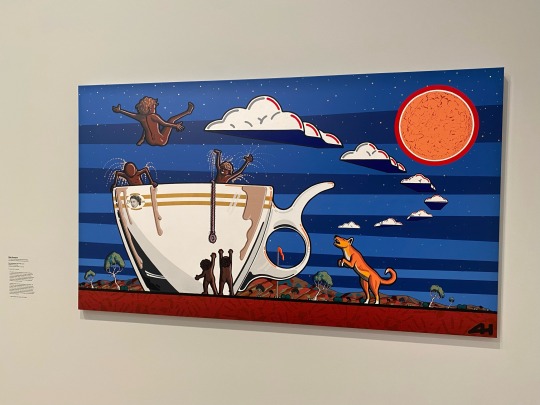
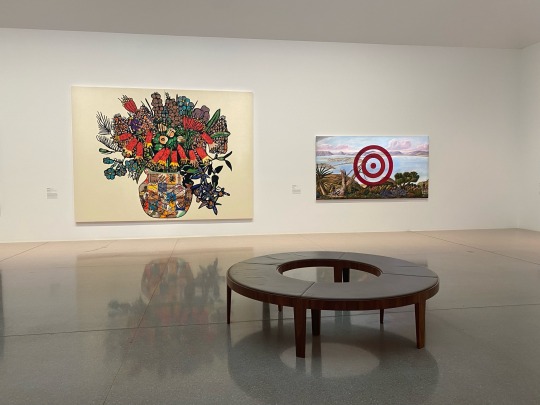

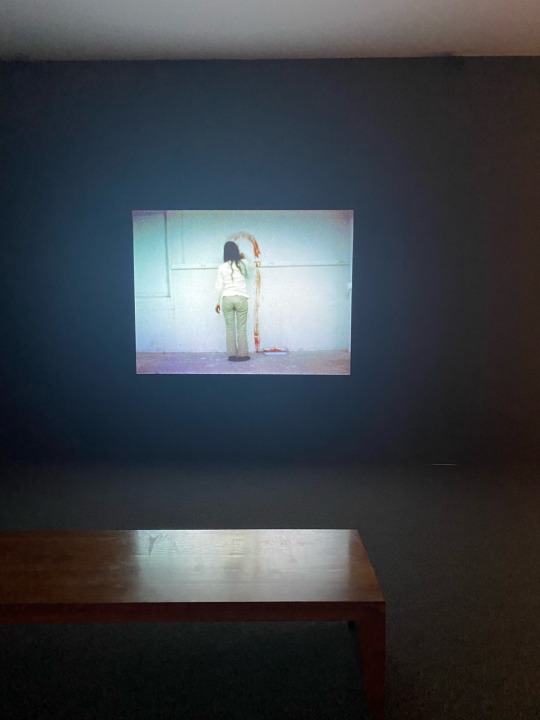
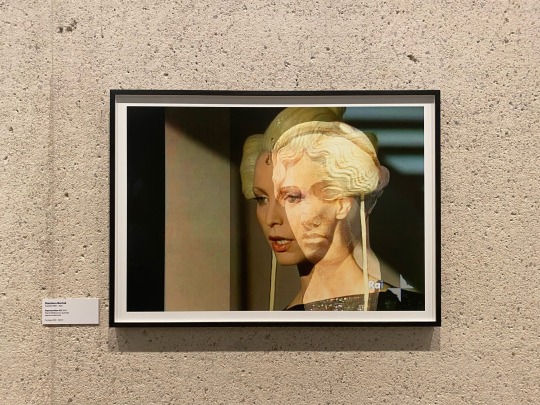
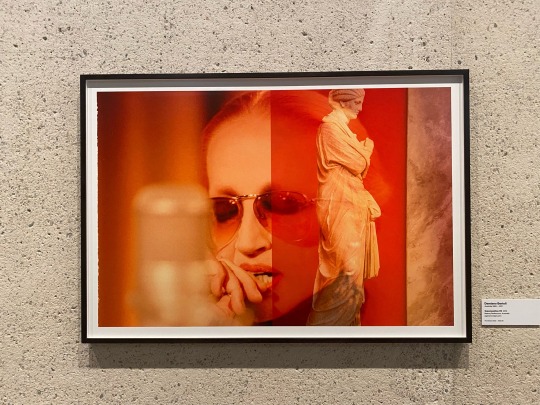
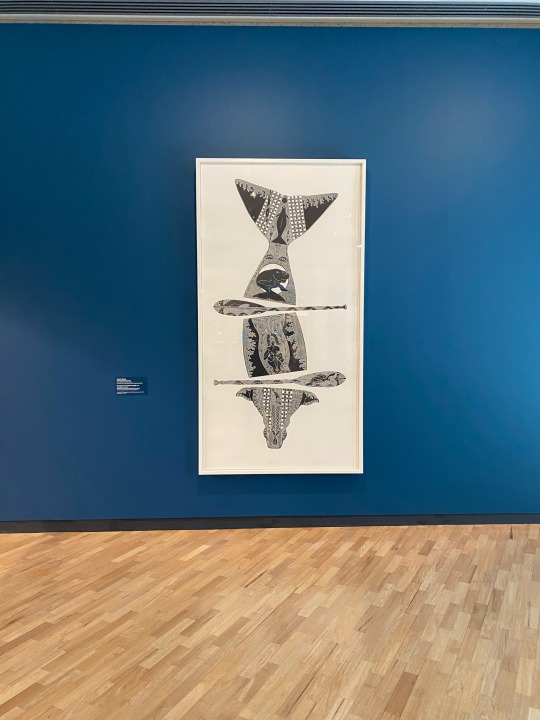

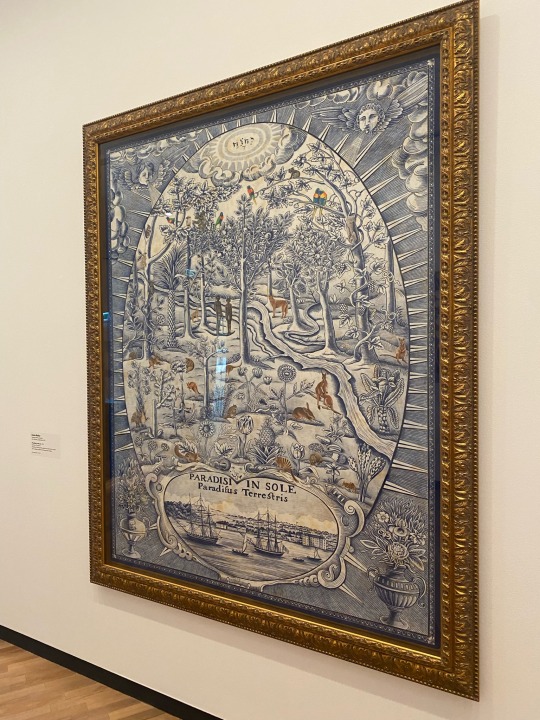
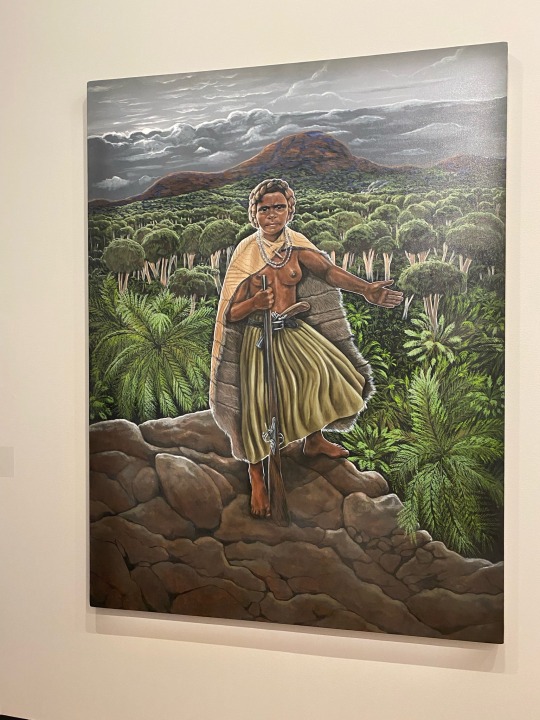
1 note
·
View note
Text
Artist Research - Ana Mendieta
My Favourite Works:
University works:
Her early works deal with the theme of violence against women, as Mendieta evokes the suffering of the female body.
Untitled (glass on body imprints - face)
Mendieta presses her face forcefully against a pane of glass at differing angles. Beyond demonstrating her bodily distress, the distortion of her face across the various images disturbs the work’s function as a portrait. In other words, Mendieta’s photographs of her face do not cohere as representative of herself, thereby disrupting how others view her and draw conclusions about her identity. She made this piece in college.
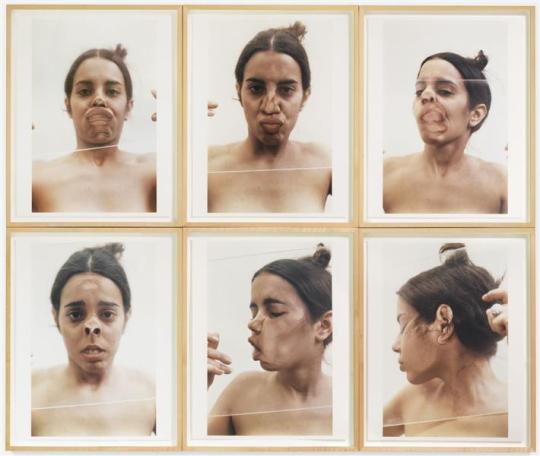
Untitled (Facial Cosmetic Variations)
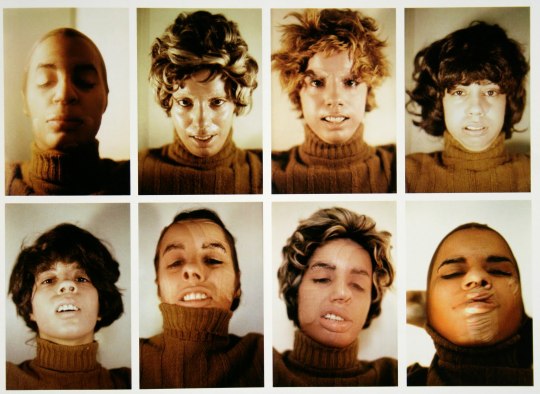
Rape scene/ Rape-Murder (1973)
this was one of her first ever performances. She created this piece after one of her fellow students at Lowa University, Sara Ann Otten, was found brutally raped and murdered. She used this piece to bring attention to the sexual violence women are subjected to.
Ana invited other students from her MFA program to her apartment, where she had left her door purposely ajar, viewers could easier pear into the dramatically lit space to see Mendieta bent over her kitchen table. Upon entering the space, her apartment was in disarray, as if it was the location of a violent sexual assault. The dimly lit space, created a closed composition directing the audience to the central core focal point of the performance, Mendieta’s body, which was striped from the waist down, bent over and tied to a table. All visible parts of the artist’s body were smeared in animal blood, dripping from her buttock to her calves, and pooling in a puddle at her feet.
The addition of blood would become a dominant element of Mendieta’s art practices in which its inclusion offered multiple meanings. In this context, not only did the substance allude to a violent act, but also was in reference to Mendieta’s personal interest in the religious rituals of the Afro-Cuban practice of Santeria. Santeria attributes blood to Goddess Ochun who symbolized female sexuality, power and spiritual life force. Ana believed blood was not negative, but empowering, and aligned herself with Goddess Ochun to present the female subject as in control of her own representation.
Body Tracks
In this film Mendieta makes track-like marks, trails of blood that drag from her forearms, drawing a downward movement like bloodshed which, when it ends, leaves the viewer staring at the remains of the action, transformed into performative text. An integral part of the performance, the motion turned Mendieta’s body into a living paint brush that gave the artist complete control of the composition while restoring her agency as a ‘third world woman.’
In this way, Ana’s body became a site of resistance to subvert the gendered colonial structures embedded in society. The use of blood, again attributed to Santeria religious practices, symbolically refilled her identity with the elemental fluid, which carries sacred power and life force, asking the question, what is the real substance of identity? But also in relation to grief over the lose of her homeland, symbolized by the shedding of blood.
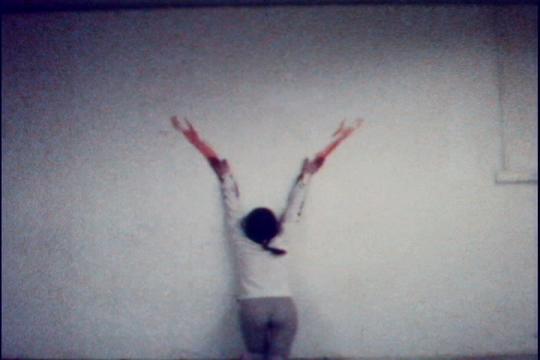


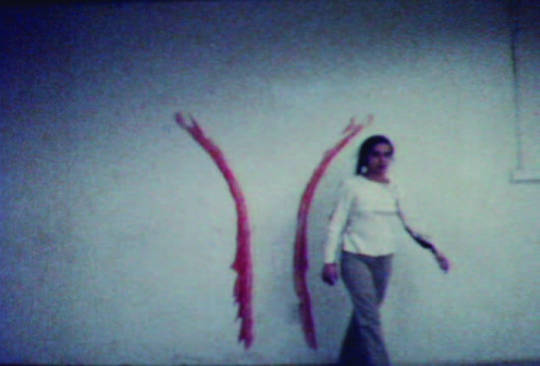


Silueta Series (1973-1980)
My favourite series. Mendieta staged performances where she laid down in natural landscapes or covered her body in organic materials and then documented the resulting imprints or silhouettes. The silhouettes themselves were temporary and due to the nature of how they are made, also meant they were accessible to the public without having to pay to see it.
These performances recall Mendieta’s experience as an exile who was separated from her homeland at a young age. In her Silueta performances she marked the land, leaving the trace of her absent body. This trace perhaps serves as a metaphor for her absence from her birthplace; she was unable to return to Cuba until the 1980s.
Ties into her incorporation of a goddess figure.

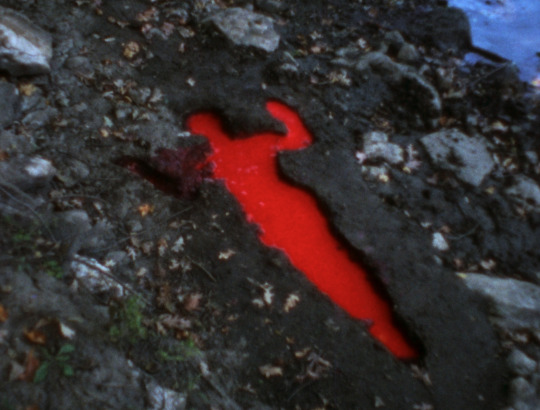

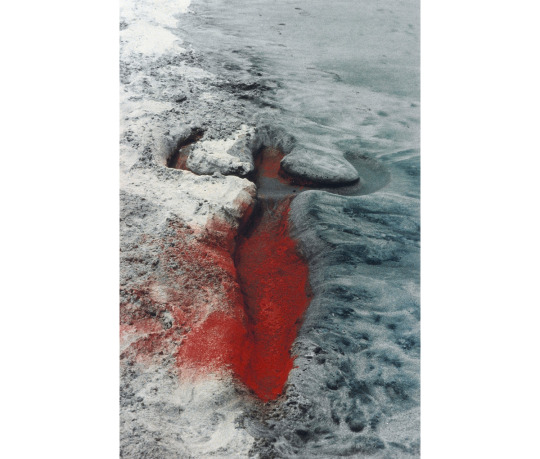
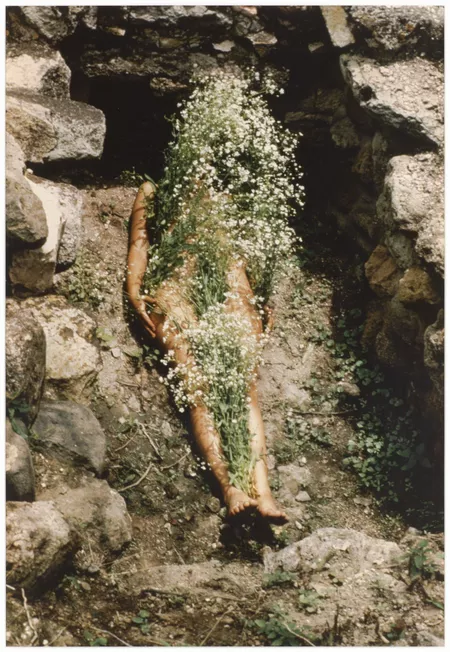
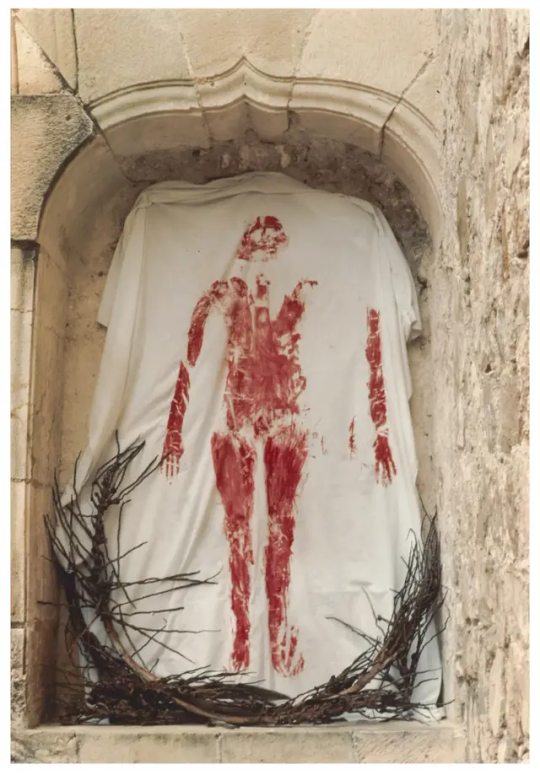
Ochun (1981)
Ochún meditates on Mendieta’s experiences as an immigrant. The video features a Silueta sculpted from earth off the coast of Key Biscayne, on Florida’s southern tip. Water, which dominates the video’s views and soundtrack, is presented as a uniting element that connects both places, evoking the artist’s hope to capture “the transition between my homeland and my new home . . . reclaiming my roots and becoming one with nature.”
We see the waves wash over the imprint of her body as it slowly carries parts of it with each ebb and flow. The idea is that the waves are picking up pieces of her off the US shores and carrying her back home.

Labyrinth of Venus series
Until feminist scholars began documenting the nuanced ways colonial conquest sanctioned sexual violence against non-white indigenous women at a rate higher than that of white western women, historians rarely conceptualised how gender and sexual violence were intrinsic to all aspects of Colonialism. The work of Cuban artist, Ana Mendieta provides insight to the complex relationship. Her work explored her relationship with gendered colonialism and institutionalised ‘gendered racism endured by women of color that dehumanises them by denying them gender. For Mendieta, this came in the form of discrimination based on her Cuban identity and experiences of sexual violence against women. the artist’s experience with colonial sexual domination and discrimination in the United States culminated in her use of the female form to theorise third-wave feminist post-colonial issues pertaining to gendered racism directed at ‘third world women,’ a term used by Mendieta in 1980 to address white global feminism’s avoidance of fights of non-white women at her curated show, ‘Dialectics of Isolation: An Exhibition of Third World Women Artists in the United States’ at A.I.R. Gallery, New York
0 notes